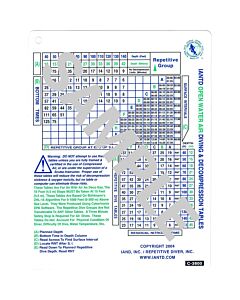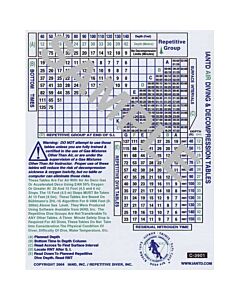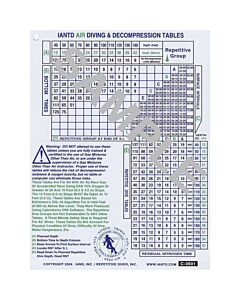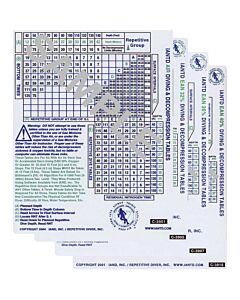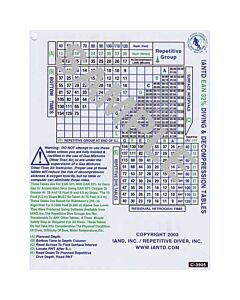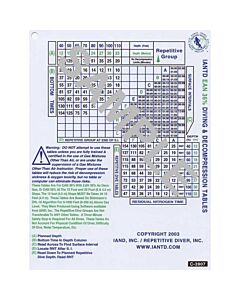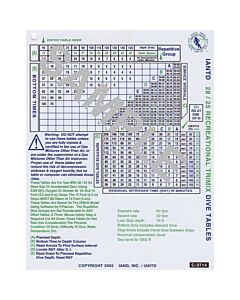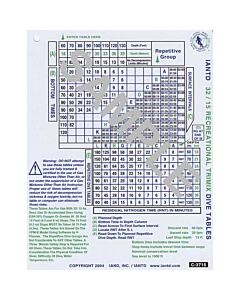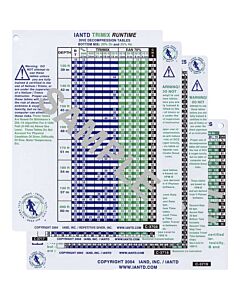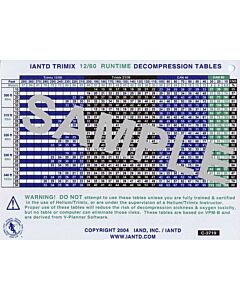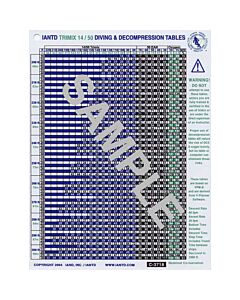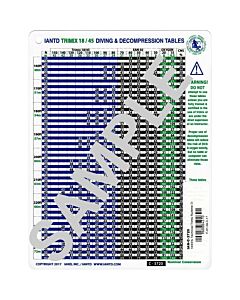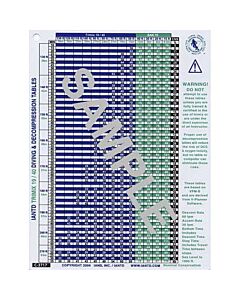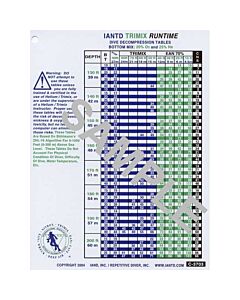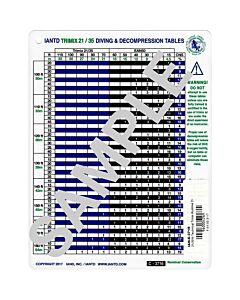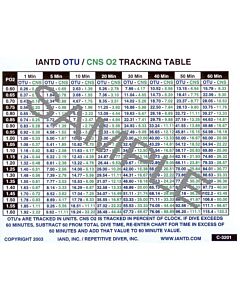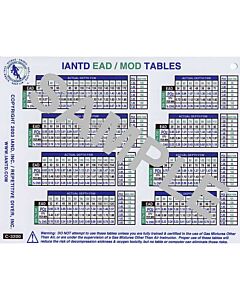Tables - Open Circuit
Even with the widespread use of computers, pre-printed dive tables continue to have an important role in dive planning, backup, bailout, and especially in required-stop decompression diving. The waterproof flexible dive tables that we offer are designed to accompany the diver on the dive and are easy to read underwater. They are nearly indestructible and can be rolled or folded into a compact size.
The International Association of Nitrox and Technical Divers (IANTD) prepared these dive schedules in a standard structure that is familiar to divers trained in the use of traditional dive tables. All tables include units of depth in both feet and meters. The tables are printed on both sides of white waterproof fabric sheets using special flexible inks in black with blue and/or green highlighting. All sheets are { 7 in x 9 in | 17.8 cm x 22.9 cm } in size, have rounded corners and a punched hole so you can assemble several sheets into an easy-to-manage collection.
-
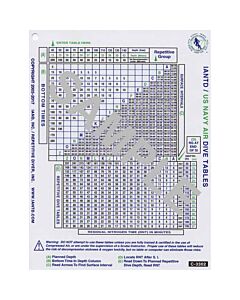 US Navy Air Dive Table$11.25
US Navy Air Dive Table$11.25 -
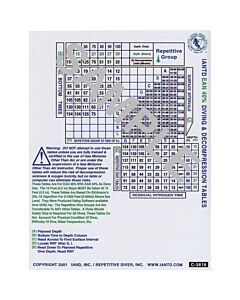 40% Nitrox Dive Table$11.25
40% Nitrox Dive Table$11.25 -
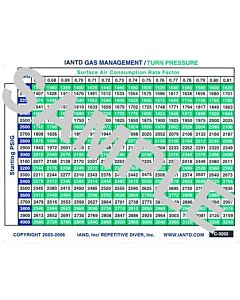 Gas Management Table$11.25
Gas Management Table$11.25
A Common Mistake When Using Tables for Repetitive Dives
When an actual depth falls between two planned depth schedules, select the deeper schedule on the bottom time (BT) table.
For example, if the dive will have a 65-foot depth, then determine the bottom time from the 70-foot schedule. The deeper schedule increases the margin of safety.
A common mistake is applying the next deeper schedule rule to the Residual Nitrogen Time (RNT) table when determining the RNT deduction from the bottom time for the repetitive dive. The proper action when determining the RNT is to use the next shallower schedule.
When an actual depth falls between two planned depth schedules, select the shallower schedule on the Residual Nitrogen Time (RNT) table.
For example, if the dive will have a 65-foot depth, then determine the Residual Nitrogen Time from the 60-foot schedule. The shallower schedule increases the RNT deduction from bottom time, increasing the margin of safety.
